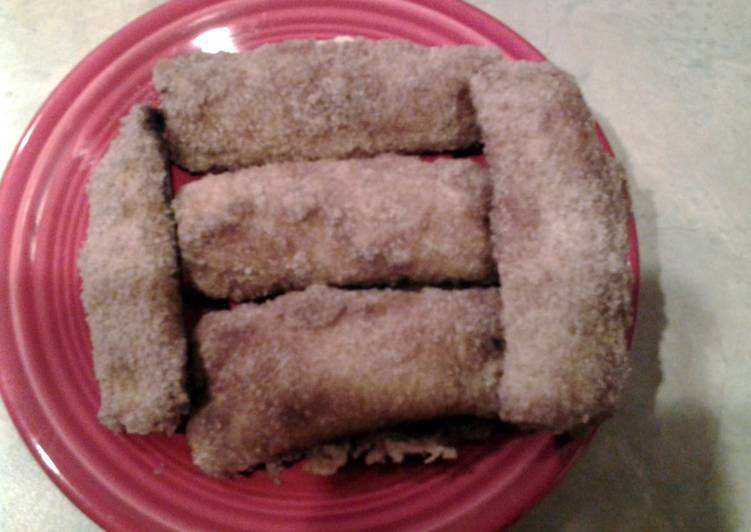
Hello everybody, hope you’re having an amazing day today. Today, I’m gonna show you how to make a special dish, sour dough bread - the holy grail of home bakers. One of my favorites food recipes. This time, I will make it a little bit tasty. This will be really delicious.
Sour Dough Bread - The Holy Grail of Home Bakers is one of the most favored of current trending foods in the world. It’s easy, it is fast, it tastes delicious. It is enjoyed by millions daily. They’re nice and they look wonderful. Sour Dough Bread - The Holy Grail of Home Bakers is something that I have loved my entire life.
But it couldn't be truer for the Holy Grail of the bread world: sourdough. For the novice home baker, sourdough can be a real cause Because most modern home bakers are accustomed to baking hacks and cooking tips that make time spent in the kitchen more. Sourdough bread is made entirely using wild yeast — with a strong, active sourdough culture of wild yeast, you won't need any commercial yeast at all.
To get started with this particular recipe, we have to first prepare a few ingredients. You can cook sour dough bread - the holy grail of home bakers using 9 ingredients and 15 steps. Here is how you cook it.
The ingredients needed to make Sour Dough Bread - The Holy Grail of Home Bakers:
- Take For STARTER and LEAVEN
- Get 500 g White-bread flour
- Make ready 500 g Whole-wheat flour
- Make ready for the bread
- Take 200 g leaven
- Take 900 g White-bread flour
- Make ready 100 grams whole-wheat flour, plus more for dusting
- Get 20 grams fine sea salt
- Take 100 grams rice flour
Here's a simple, forgiving loaf for practicing your newfound skills. The addition of instant yeast But for those of you just starting out (or even you seasoned sourdough bakers looking for a slam-dunk loaf), there's a quick. "Scientific" bakers hold that sourdough bread can't be made without a thorough understanding of the symbiotic chemical relationship between yeast and lactobacilli. But bakers' intuition is as essential to sourdough success as pure science. We see the same flour/water combination behaving differently.
Instructions to make Sour Dough Bread - The Holy Grail of Home Bakers:
- Make the starter: Combine 500 grams white-bread flour with 500 grams whole-wheat flour. Put 100 grams of warm water (about 80 degrees) in a small jar or container and add 100 grams of the flour mix. Use your fingers to mix until thoroughly combined and the mixture is the consistency of thick batter. Cover with a towel and let sit at room temperature until mixture begins to bubble and puff, 2 to 3 days.
- When starter begins to show signs of activity, begin regular feedings. Keep the starter at room temperature, and at the same time each day discard 80 percent of the starter and feed remaining starter with equal parts warm water and white-wheat flour mix (50 grams of each is fine). When starter begins to rise and fall predictably and takes on a slightly sour smell, it’s ready; this should take about 1 week.(Reserve remaining flour mix for leaven.)
- Make the leaven: The night before baking, discard all but 1 tablespoon of the mature starter. Mix the remaining starter with 200 grams of warm water and stir with your hand to disperse. Add 200 grams of the white-wheat flour mix and combine well. Cover with a towel and let rest at room temperature for 12 hours or until aerated and puffed in appearance. To test for readiness, drop a tablespoon of leaven into a bowl of room-temperature water; if it floats it’s ready to use.
- Make the dough: In a large bowl, combine 200 grams of leaven with 700 grams of warm water and stir to disperse. (Reserve remaining leaven for future loaves; see note below.)
- Add 900 grams of white-bread flour and 100 grams of whole-wheat flour to bowl and use your hands to mix until no traces of dry flour remain. The dough will be sticky and ragged. Cover bowl with a towel and let dough rest for 25 to 40 minutes at room temperature.
- Add 20 grams fine sea salt and 50 grams warm water. Use hands to integrate salt and water into dough thoroughly. The dough will begin to pull apart, but continue mixing; it will come back together.
- Cover dough with a towel and transfer to a warm environment, 75 to 80 degrees ideally (like near a window in a sunny room, or inside a turned-off oven). Let dough rise for 30 minutes. Fold dough by dipping hand in water, taking hold of the underside of the dough at one quadrant and stretching it up over the rest of the dough. Repeat this action 3 more times, rotating bowl a quarter turn for each fold. Do this every half-hour for 2 1/2 hours more (3 hours total). The dough should be billowy.
- Transfer dough to a work surface and dust top with flour. Use a dough scraper to cut dough into 2 equal pieces and flip them over so floured sides are face down. Fold the cut side of each piece up onto itself so the flour on the surface remains entirely on the outside of the loaf; this will become the crust. Work dough into taut rounds. Place the dough rounds on a work surface, cover with a towel, and let rest 30 minutes.
- Mix 100 grams whole-wheat flour and 100 grams rice flours. Line two 10- to 12-inch bread-proofing baskets or mixing bowls with towels. Use some of the flour mixture to generously flour towels (reserve remaining mixture).
- Dust rounds with whole-wheat flour. Use a dough scraper to flip them over onto a work surface so floured sides are facing down. Take one round, and starting at the side closest to you, pull the bottom 2 corners of the dough down toward you, then fold them up into the middle third of the dough. Repeat this action on the right and left sides, pulling the edges out and folding them in over the center. Finally, lift the top corners up and fold down over previous folds.
- (Imagine folding a piece of paper in on itself from all 4 sides.) Roll dough over so the folded side becomes the bottom of the loaf. Shape into a smooth, taut ball. Repeat with other round.
- Transfer rounds, seam-side up, to prepared baskets. Cover with a towel and return dough to the 75- to 80-degree environment for 3 to 4 hours. (Or let dough rise for 10 to 12 hours in the refrigerator. Bring back to room temperature before baking.)
- About 30 minutes before baking, place a Dutch oven or lidded cast-iron pot in the oven and heat it to 500 degrees. Dust tops of dough, still in their baskets, with whole-wheat/rice-flour mixture. Very carefully remove heated pot from oven and gently turn 1 loaf into pan seam-side down. Use a lame (a baker’s blade) or razor blade to score the top of the bread a few times to allow for expansion, cover and transfer to oven. Reduce temperature to 450 degrees and cook for 20 minutes.
- Carefully remove lid (steam may release) and cook for 20 more minutes or until crust is a rich, golden brown color.
- Transfer bread to a wire rack to cool for at least 15 minutes before slicing. The bottom of the loaf should sound hollow when tapped. Increase oven temperature to 500 degrees, clean out pot and repeat this process with the second loaf.
A classic sourdough bread recipe makes a loaf with the perfect texture for sandwiches, toast or crispy bruschetta. How To Make Perfect Sourdough Bread At Home (Starter Included!) Every baker needs an all-purpose, go-to loaf in their repertoire. And if you're new to sourdough, this recipe for no-knead everyday sourdough bread is the perfect Emilie's book really changed that for me. Her recipes are almost entirely based on a no-knead overnight method of letting the dough sit.
So that is going to wrap it up with this special food sour dough bread - the holy grail of home bakers recipe. Thank you very much for your time. I’m confident that you can make this at home. There is gonna be interesting food at home recipes coming up. Don’t forget to bookmark this page in your browser, and share it to your loved ones, colleague and friends. Thanks again for reading. Go on get cooking!

